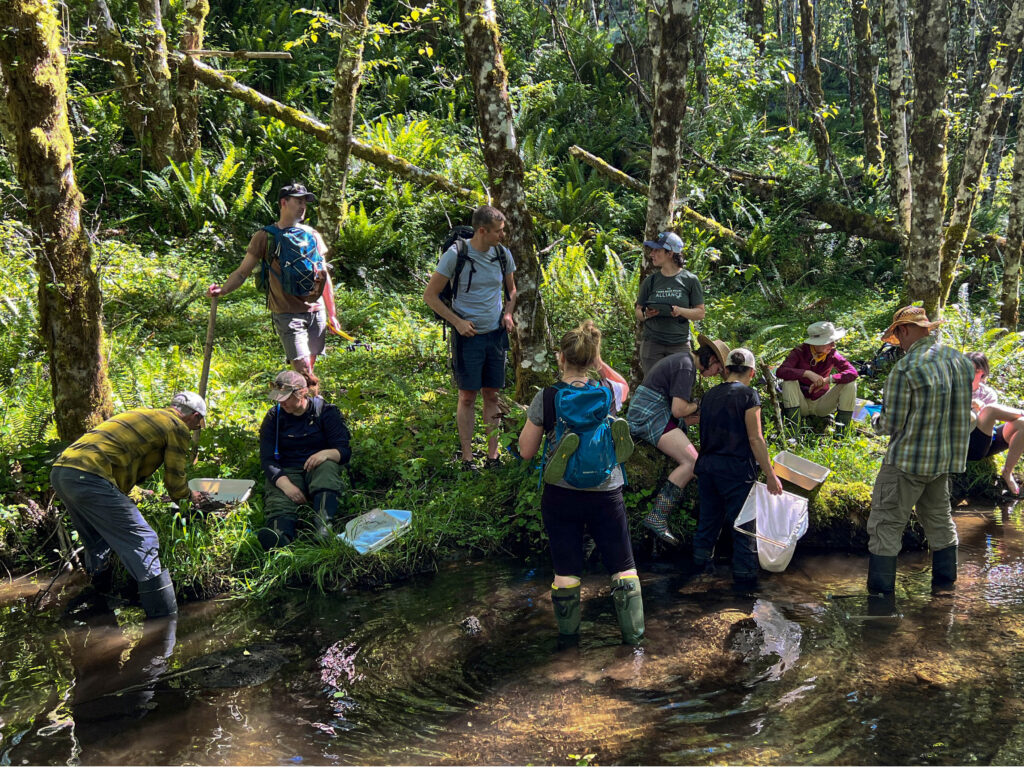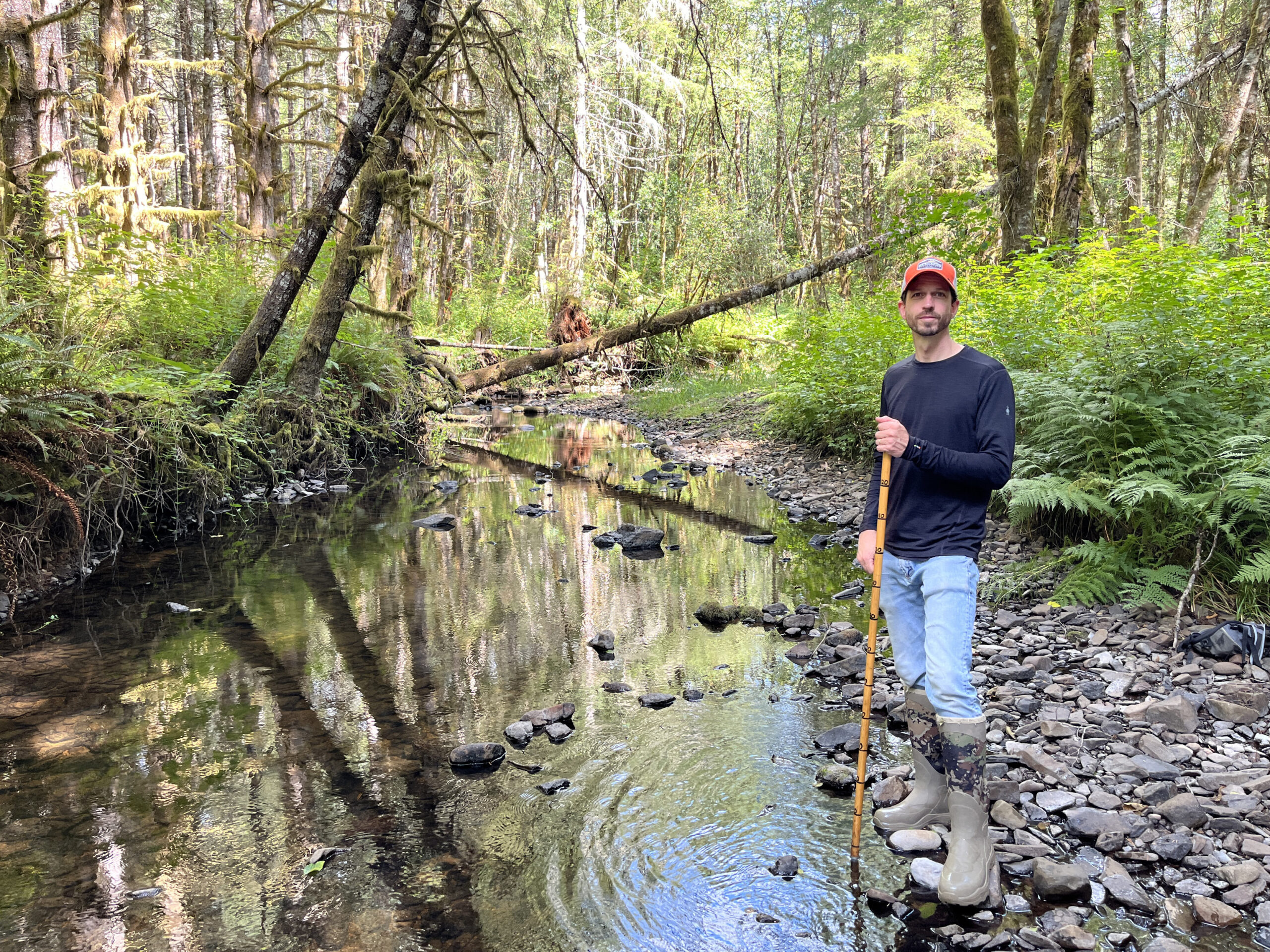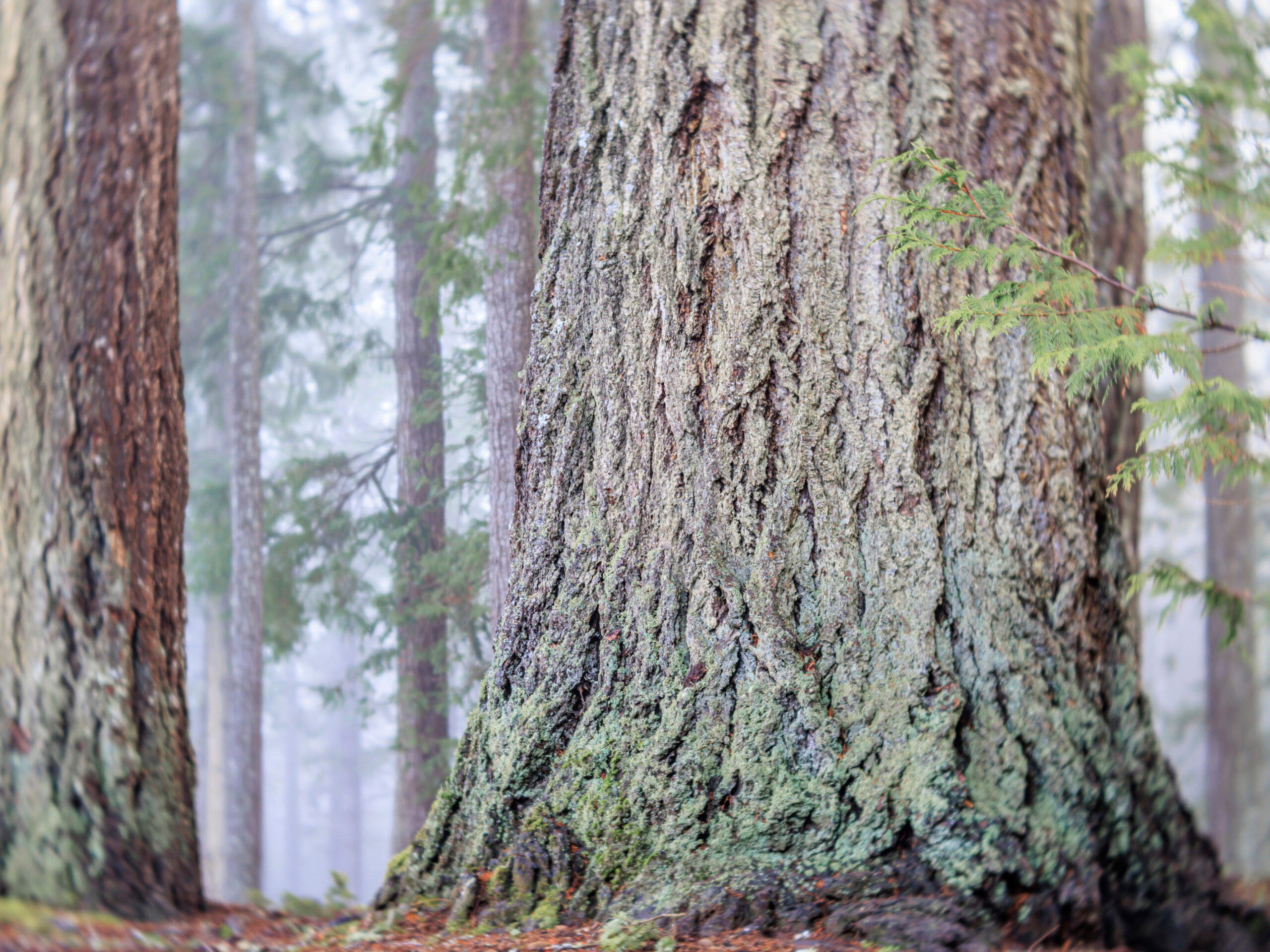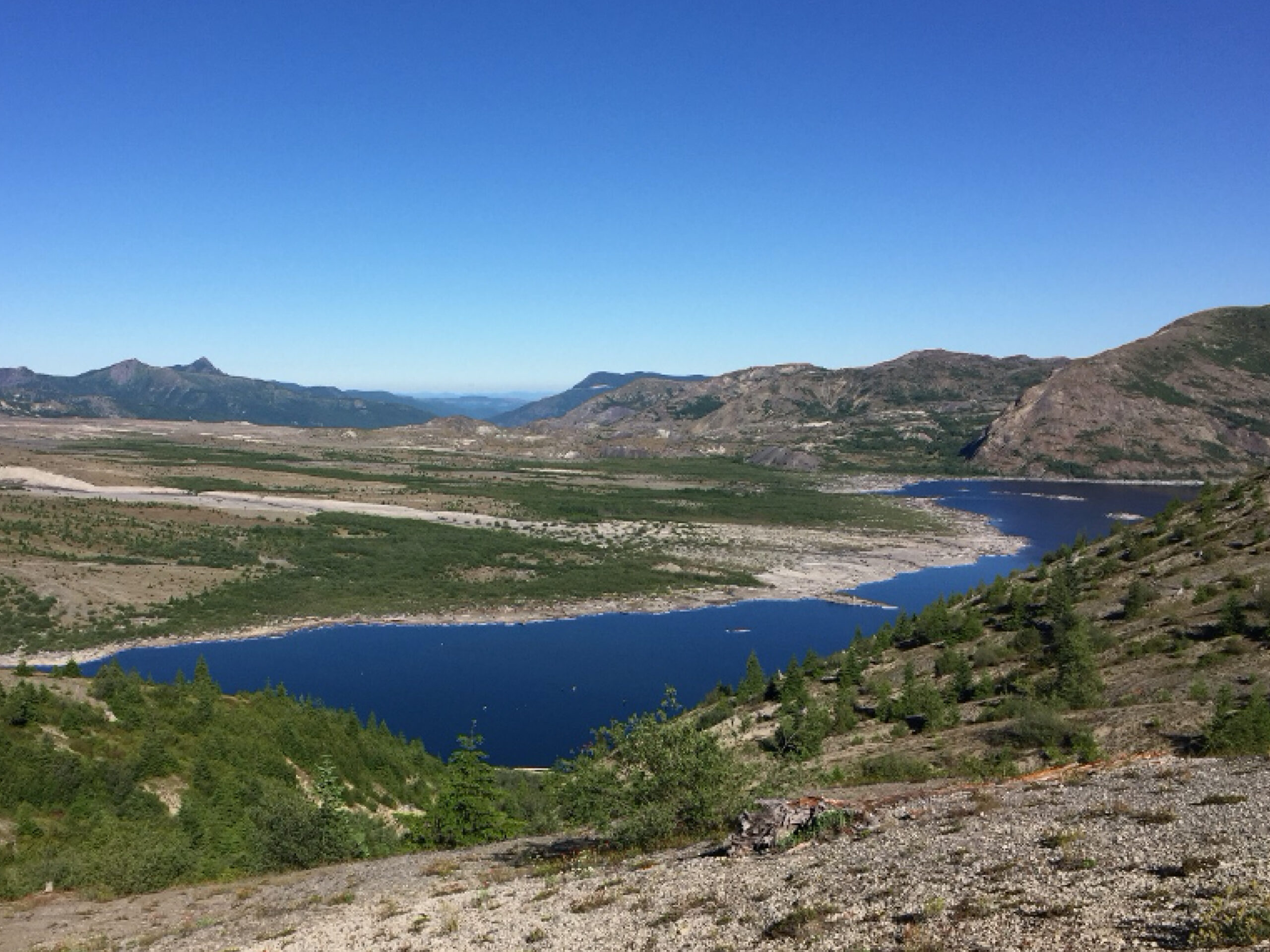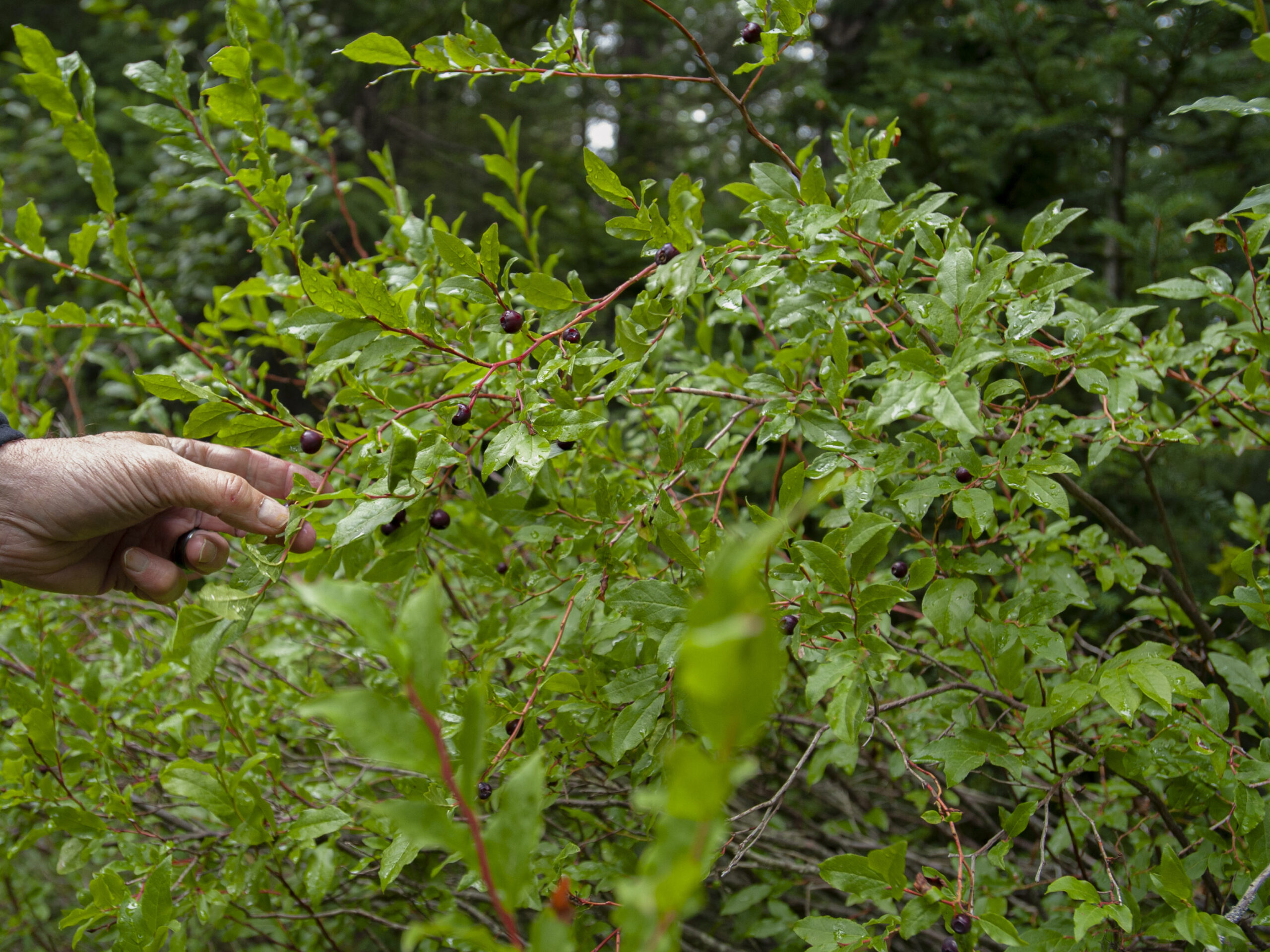At the end of June, CFC staff and volunteers visited two South Fork Toutle River tributaries to survey for the presence or absence of lamprey–an ancient and relatively understudied keystone species.
Excellent reporting in an article by Brian Oaster, an award-winning journalist, staff writer at High Country News, and member of the Choctaw Nation, explains the importance of the species and the dire situation they are facing. Oyster’s reporting was the source of many facts in this blog.
The Pacific lamprey is an ancient species of jawless fish with a cartilage skeleton, an eel-like body, and an oval sucker mouth filled with an array of hooked teeth used to attach and parasitically feed on hosts. They have survived five mass extinctions, remained unchanged since the time of the dinosaurs, and have been around for more than 400 million years. But man-made impacts may be pushing this species toward their decline.
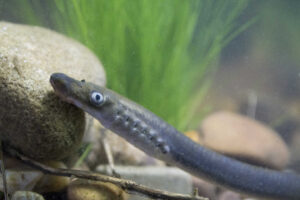
Many lamprey runs have disappeared, and some fear that as much as 90% of their former population has been wiped out by habitat degradation and dams. Until recently, most Western scientists ignored the species. However, many tribes have been sounding the alarm over declining Pacific lamprey populations and distribution throughout the Pacific region for decades.
Lamprey is a first food used for sustenance and medicine. Despite being smaller than salmon, a lamprey contains more than four times the omega-3 fatty acids and calories than the more famous fish. In addition to being a culturally important and super nutritious food source, Pacific lamprey are a keystone species, meaning their decline can drastically change entire ecosystems.
AN UNDERSTUDIED AND IMPERILLED KEYSTONE SPECIES
Pacific lamprey are anadromous fish, meaning they are born inland, migrate to sea, and eventually return to freshwater to spawn. After mating, the adults die. In Oyster’s article, Yurok tribal member and fisheries biologist Keith Parker explains that prior to colonial settlement, migrating “Pacific lamprey were the largest biomass of anything in the river–not just fish, but of anything.” Their bodies were a yearly transfer of marine nutrients to inland watersheds on a staggeringly massive scale. The trees are full of nutrients from the sea carried inland in the bodies of countless generations of lamprey. While they are weaker swimmers than salmon and steelhead, Pacific lamprey are capable of reaching certain headwaters that are inaccessible to those species by using their sucker mouths to climb waterfalls!
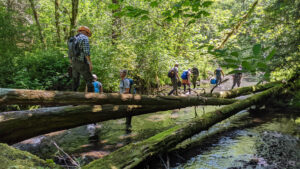
Their young also serve critical ecological functions. Before developing into an adult, a larval lamprey spends 2-7 years in freshwater. They are filter feeders that bury themselves underneath streambeds, recycling nutrients, aerating water, and providing meals to larger fish.
COLLABORATING WITH THE COMMUNITY TO PROTECT PACIFIC LAMPREY
A number of tribes have been working to protect the species through translocations, habitat restoration, artificial propagation, and by petitioning the government to take action. After the Pacific lamprey was denied listing for protection through the Endangered Species Act by the U.S. Fish & Wildlife Service in 2004, tribes, government agencies, and non-profits knew they needed to respond and collaborated to create the Pacific Lamprey Conservation Initiative (PLCI).
Cascade Forest Conservancy has joined the PLCI and received funding through the Bonneville Power Association to explore several creeks in SW Washington to see if there are populations currently existing in these waterways. Last year we surveyed the Wind River, Panther Creek, and Pete Gulch using environmental DNA, a less-invasive surveying technique that allows scientists to test water samples for the presence or absence of a targeted species. We found that the distribution of Pacific lamprey in the Wind River goes 7.5 miles higher than what was previously reported by the Fish and Wildlife Service in 2016!
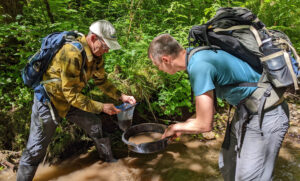
This year’s area of focus was the South Fork Toutle River. A couple of weeks ago, we headed out on a warm, sunny Saturday morning with 12 volunteers to walk along the reaches of Stump Creek in search of Pacific lamprey. We conducted various surveys to look for lamprey at their various life stages. Pacific lamprey spawn in the summer, so we made sure to keep an eye out for lamprey redds (gravel beds that lamprey and other fish build to lay and fertilize eggs).
Larval lamprey spend years in freshwater buried beneath fine sediments, so we also used a survey technique to dig into the sediment and carefully sift through it to (hopefully) uncover lamprey. We also took several environmental DNA samples that will determine Pacific lamprey’s presence within Stump Creek. In addition to all the lamprey surveys, we documented other fish species we saw, beaver activity, and type 1 habitat (fine sediments, shady, slow-moving water), which is the preferred habitat of larval lamprey.
With so many volunteers, we could split into groups and cover a large portion of the creek. At the end of the first day, the groups compared notes. We had not found any lamprey redds or larval lamprey. However, we identified a decent amount of type 1 habitat, which led us to wonder what was missing.
LAMPREY AT LAST!
The next day we headed to another South Fork Toutle tributary–a location our partners at Lower Columbia Fish Enhancement Group were particularly curious about the existence or lack of lamprey populations. This creek is a likely site for future restoration efforts, so we wanted to learn what populations may be there because that data can inform the design of the restoration project.
Once we arrived to the creek, I found an easy way down to the water near a bridge and I suggested we start there. As we got closer to the water, we saw numerous patches of type 1 habitat, so the volunteers grabbed the larval lamprey sampling gear and started to dig. Excitement erupted when someone found a 1-inch long wiggly creature, but I, unfortunately, had to burst their bubble by revealing that we were looking at a horsefly larva.
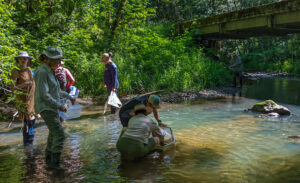
Once again, volunteers broke into groups to search in different sections of the stream. One volunteer pointed out a small patch of really fine and silty sediment on the opposite side of the bank. I headed over with her, and as I stuck the sampling base into the sediment, I saw a glimpse of a silvery body. Because we had seen fish all day, I assumed this was the same and exclaimed–“I caught a fish!”. Others said, “No, no, no, I think that’s a lamprey!”
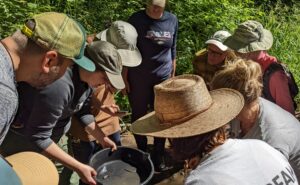
Everyone held their breath as I scooped the dip net to try to catch our mystery specimen. As I dumped the contents of the dip net into a tray, we saw a 7-inch, dark blue, iridescent eel-shaped creature, equipped with a suction mouth and seven breathing holes–it was none other than our elusive lamprey. Excitement erupted again, even louder as all the volunteers ran over to get a glimpse of our ancient friend. We continued scoping out more sediment and uncovered several other lampreys of various sizes. Data was collected, photos were taken, and we sent the lamprey back into the stream so they could dig back down into the comfort of the fine sediments. After this discovery, we continued upstream with huge smiles, determined to find more lamprey. We spent several more hours digging and uncovering more larval lamprey.
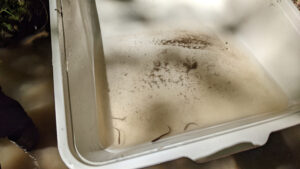
USING DATA TO GUIDE RESTORATION
Though finding our target species during our second day of surveys was more exciting, our failure to find lamprey and optimal habitat in Stump Creek has provided data that is equally important to our work. Together, the information gathered over two years at various sites tells a story that backs up the need for restoration. Once we saw where lamprey were found on the second day, in a particular silty fine sediment, we realized that the less-fine sediments in Stump Creek may not be currently capable of providing the exact habitat features that lamprey need.
Later this year, CFC will be installing several wood structures into the stream to improve the aquatic and riparian habitat at Stump Creek. Introducing more woody debris will help slow the water, create deep pools, retain fine sediments, and keep water in the system for longer–all features that will benefit Pacific lamprey, salmonids, beaver, and more!



